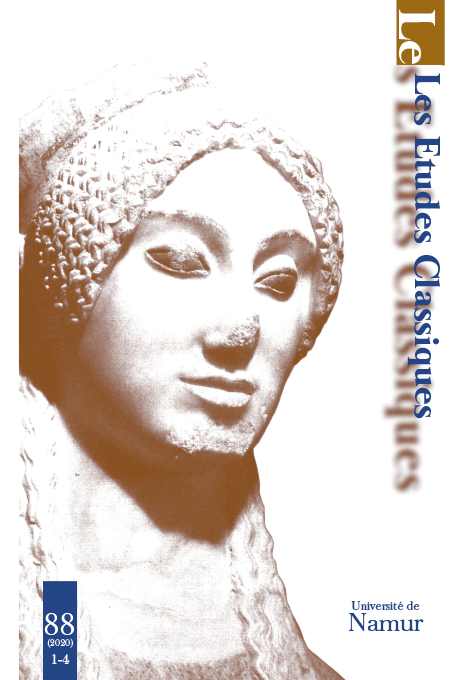 previous article in this issue previous article in this issue | next article in this issue  |

|
Document Details : Title: On the Threshold of Hades Subtitle: Necromancy and Nékyia in Some Passages of Greek Tragedy Author(s): MACÍAS OTERO, Sara M. Journal: Les Études Classiques Volume: 83 Issue: 1-4 Date: 2015 Pages: 137-153 DOI: 10.2143/LEC.83.1.3290572 Abstract : In Greek tragedy there are some passages where a katábasis is mentioned or described. Euripides is the author that brings us the highest number of testimonies on the subject: there are two important texts from Alcestis, one which mentions Heracles’ descent to Hades in order to bring the heroine back to life (v. 840ff.), and another where we find references to the katábasis of Orpheus in search of his wife (v. 357ff.). On the other hand there are also a fragment of the satiric play Eurystheus (371 Kannicht) and a passage of Herakles (v. 606ff.) where the hero recalls how he got Cerberus out from Hades. To these texts we can add a striking fragment of Aeschylus’ lost tragedy Psychagogoi (273 Radt). In this article, I study and compare all these texts with the katábasis of the Odyssey and Aristophanes’ Frogs, and I also relate them to rituals of initiation and necromancy, when it is relevant. In this way I hope to shed some light on the resemblances and differences of the typology and the usage of the various katabáseis in Greek tragedy. La tragédie grecque recèle quelques passages qui mentionnent ou décrivent une catabase. Euripide est l’auteur qui nous offre le plus grand nombre de témoignages sur ce thème. Il y a deux passages importants dans l’Alceste: l’un évoque la descente d’Héraclès aux Enfers pour ramener l’héroïne à la vie (v. 840 et s.) et le second fait référence à la catabase d’Orphée à la recherche de sa femme (v. 357 et s.). Par ailleurs, il y a aussi un fragment du drame satirique Eurysthée (371 Kannicht) et un passage de l’Héraclès (v. 606 et s.), où le héros raconte comment il a fait sortir Cerbère de l’Hadès. À ces textes, nous pouvons ajouter un fragment marquant de la tragédie perdue d’Eschyle, les Psychagogoi (273 Radt). Dans la présente étude, j’étudie ces textes et les compare avec les catabases de l’Odyssée et des Grenouilles d’Aristophane et je les rattache aux rituels d’initiation et de nécromancie, lorsque cela est pertinent. De cette façon, j’espère clarifier quelque peu les ressemblances et les différences entre la typologie et l’utilisation des divers récits de catabases dans la tragédie grecque. |
 |
